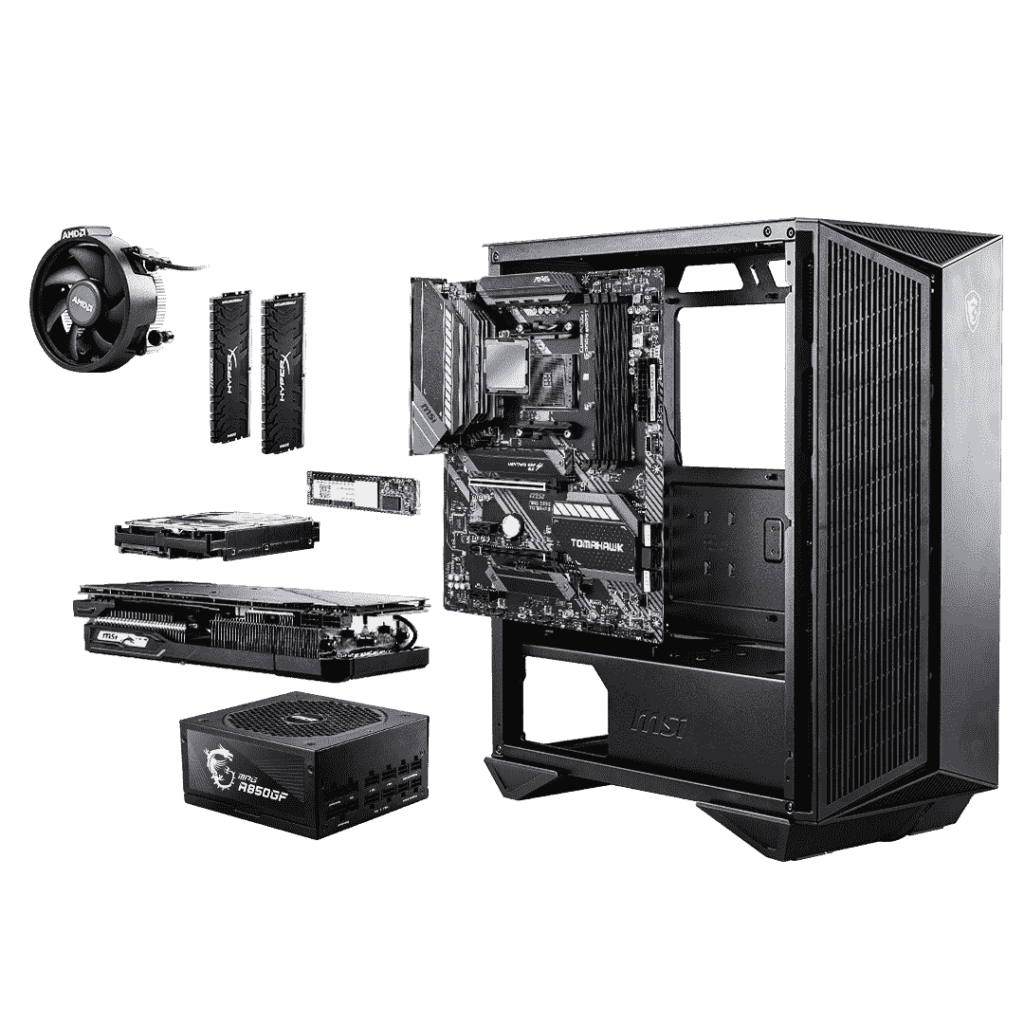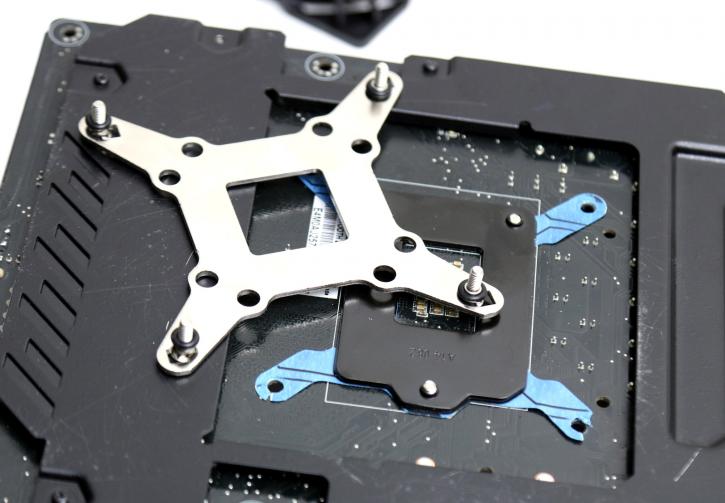A CPU backplate is a metal or plastic piece installed behind the motherboard. It provides support for the CPU cooler, ensuring it stays in place and helps in cooling the CPU effectively. This small component is crucial for the stability and performance of your computer.
A CPU backplate is a piece of metal or plastic placed behind the computer’s motherboard. It helps secure the CPU cooler, keeping it stable and improving cooling. This small part is important for your computer’s performance.
In this article, we will discuss “what is a cpu backplate”.
Understanding The Cpu Backplate:
What Is A CPU Backplate?
A CPU backplate is a metal or plastic piece that goes behind the motherboard. It supports the CPU cooler, keeping it stable and helping with cooling. This part is important for making sure your computer works well.
Why It’s Important For Your Computer?
A CPU backplate is important because it keeps the CPU cooler stable, which helps prevent overheating. Overheating can slow down your computer or cause damage. By supporting the cooler, the backplate helps your computer run smoothly and last longer.

The Role Of A Cpu Backplate:
What Does A CPU Backplate Do?
A CPU backplate supports the CPU cooler, keeping it firmly in place. It helps distribute the weight of the cooler evenly, preventing the motherboard from bending. This support ensures better cooling, which helps your computer run efficiently and stay in good condition.
How Does It Support Your CPU Cooler?
A CPU backplate supports your CPU cooler by holding it firmly against the CPU. This keeps the cooler stable, preventing it from moving or tilting, and helps ensure even cooling for better computer performance and longer life.
Read More: Why Does My CPU Fan Start And Stop – Check Fan Settings!
What Are The Different Types Of CPU Backplates And Their Differences?
Metal Backplates:
These are strong and durable, providing excellent support for the CPU cooler. They help distribute the cooler’s weight evenly, reducing the risk of motherboard bending. Metal backplates also help with heat dissipation, which can improve cooling performance.
Plastic Backplates:
These are lighter and easier to install. While they may not be as strong as metal backplates, they still offer good support for the CPU cooler and are often sufficient for regular use. Plastic backplates are also more affordable, making them a popular choice for budget builds.
Why Your Computer Needs A CPU Backplate?
Your computer needs a CPU backplate to keep the CPU cooler stable and secure. This prevents the motherboard from bending and helps the cooler work better, reducing the risk of overheating. A stable CPU cooler ensures your computer runs smoothly and lasts longer.

How To Install A CPU Backplate?
To install a CPU backplate, place it behind the motherboard, aligning it with the holes. Insert screws through the front of the motherboard into the backplate. Tighten the screws to secure the backplate. This helps keep the CPU cooler stable and in place.
Compatibility: Does Your CPU Cooler Need A Backplate?
Not all CPU coolers need a backplate, but many do, especially larger or heavier ones. Check your CPU cooler’s instructions to see if a backplate is required. Using the right backplate ensures your cooler is stable and works properly, helping to keep your CPU cool.
Examples Of Compatible Coolers:
Cooler Master Hyper 212 EVO: Popular for its balance of performance and price.
Noctua NH-D15: Known for excellent cooling performance.
Corsair H100i: A high-performance liquid cooler.
Read More: Why Is My CPU Overclocking Itself – Optimize Your Performance!
What Are The Common Issues With CPU Backplates?
Common issues with CPU backplates include improper alignment, which can cause the cooler to not fit correctly, and loose screws, leading to instability. Sometimes, backplates can be incompatible with certain motherboards, causing installation difficulties.
How Do You Care For Your CPU Backplate?
To care for your CPU backplate, check it regularly for tight screws and proper alignment. Clean it gently with a soft cloth to remove dust. If you need to remove the cooler, be careful not to damage the backplate or the motherboard.

What Is The Main Purpose Of A CPU Backplate?
The main purpose of a CPU backplate is to support the CPU cooler, keeping it stable and secure. This helps prevent the motherboard from bending and ensures better cooling, which keeps your computer running smoothly and efficiently.
Do I Need A CPU Backplate?
Yes, you need a CPU backplate if your CPU cooler requires it. A backplate provides support and stability for the cooler, helping to prevent the motherboard from bending and ensuring better cooling performance for your computer.
How Can I Ensure My Backplate Is Properly Installed?
To ensure your backplate is properly installed, align it correctly with the motherboard holes, secure it with tight screws, and check that the CPU cooler is stable. Refer to the cooler’s manual for specific instructions to avoid mistakes.
Can I Use My CPU Cooler Without A Backplate?
No, you cannot use your CPU cooler without a backplate if it requires one. The backplate provides necessary support and stability for the cooler, ensuring proper cooling and preventing damage to the motherboard. Always follow the cooler’s instructions.
Read More: CPU Usage Drops When I Open Task Manager – Optimize Your Performance!
Where Does The CPU Backplate Go?
The CPU backplate goes on the backside of the motherboard, directly behind the CPU socket. It provides support for the CPU cooler, helping to keep it stable and ensuring proper cooling. Make sure to align it correctly with the holes.

Do Backplates Come With Motherboards?
No, backplates do not usually come with motherboards. They typically come with CPU coolers that require them. If your cooler needs a backplate, it should be included in the cooler’s package, not with the motherboard.
Is The CPU Backplate Supposed To Be Loose?
No, the CPU backplate should not be loose. It should be firmly secured to provide proper support for the CPU cooler. If it’s loose, check the screws and alignment to ensure everything is tightened and fitted correctly.
What Happens If You Over-Tighten CPU?
If you over-tighten the CPU cooler, it can damage the CPU or motherboard. Over-tightening can cause cracks or warping, leading to poor performance or failure. Always tighten screws firmly but gently, following the cooler’s instructions to avoid damage.
What Can Ruin A CPU?
Several things can ruin a CPU: overheating due to poor cooling, physical damage from improper installation, static electricity, incorrect voltage settings, and exposure to liquid.
How To Tell If A CPU Cooler Is Seated Properly?
To tell if a CPU cooler is seated properly, check that it’s flat and secure on the CPU. The screws or clips should be tightened evenly. The cooler should not move or wobble, and your computer should run without overheating issues.
Can I Touch My CPU With My Finger?
No, you should not touch your CPU with your finger. Oils and dirt from your skin can damage the CPU. Always handle the CPU by its edges and use anti-static precautions to avoid static electricity damage.
Read More: What Is CPU Graphics Called? – Comprehensive Guide Of 2024!
Can Bent CPU Pins Damage The CPU?
Yes, bent CPU pins can damage the CPU. Bent pins can prevent proper connections, leading to malfunction or failure. If you notice bent pins, handle them carefully and try to straighten them gently, or seek professional help to avoid further damage.

Frequently Ask Questions:
1. Can I Install A CPU Backplate Myself?
Yes, you can install a CPU backplate yourself. Follow the instructions provided with your CPU cooler, and use the proper tools to ensure a secure fit.
2. Do All CPU Coolers Come With A Backplate?
No, not all CPU coolers come with a backplate. Some coolers, especially lighter ones, don’t need a backplate. Check your cooler’s requirements before buying.
3. Can I Reuse A CPU Backplate?
Yes, you can reuse a CPU backplate if it’s still in good condition and compatible with your new cooler and motherboard. Always check compatibility before reusing it.
4. Does A CPU Backplate Affect Cooling Performance?
Yes, a CPU backplate can improve cooling performance by ensuring the cooler is securely mounted, which helps maintain good contact with the CPU.
5. Can A Damaged CPU Backplate Cause Problems?
Yes, a damaged CPU backplate can cause the cooler to become unstable, leading to poor cooling and potential damage to the CPU or motherboard.
6. Are There Universal CPU Backplates?
Some CPU backplates are universal and fit multiple cooler models, but always check the specifications to ensure compatibility with your cooler and motherboard.
7. How Do I Know If My CPU Backplate Is Installed Correctly?
Your CPU backplate is installed correctly if the cooler is stable, the screws are tight, and the cooler makes good contact with the CPU without wobbling.
8. Can I Buy A CPU Backplate Separately?
Yes, you can buy a CPU backplate separately if you need a replacement or an upgrade.
9. Do Liquid Coolers Need A Backplate?
Many liquid coolers need a backplate to secure the pump and radiator assembly. Check the installation guide for your specific liquid cooler model.
10. What Should I Do If My CPU Backplate Doesn’t Fit?
If your CPU backplate doesn’t fit, check the compatibility with your motherboard and cooler. You might need to buy a compatible backplate or seek professional help for installation.
Conclusion:
In conclusion, a CPU backplate is a crucial component that supports the CPU cooler, ensuring stability and effective cooling. It helps prevent motherboard bending and improves overall computer performance. Understanding the types, installation, and care of backplates is important for maintaining a healthy and efficient computer system. Proper installation and choosing the right backplate ensure your computer runs smoothly and lasts longer.
Related Posts:
- What Provides The Best Cooling To The CPU – Best Cooling Picks 2024!
- Can A CPU Die From Overheating – Ultimate Guide For 2024!
- CPU Affinity Android – Complete Guide – 2024!
- CPU Machine Check Architecture Error Dump – Fix Hardware Issues!
